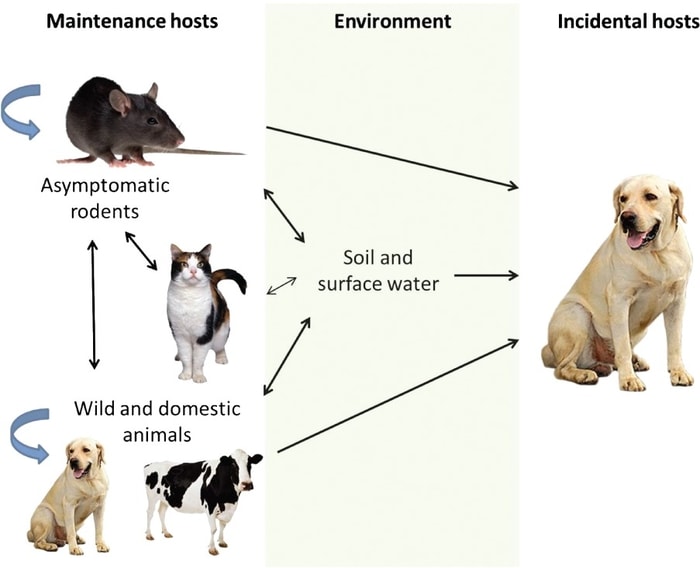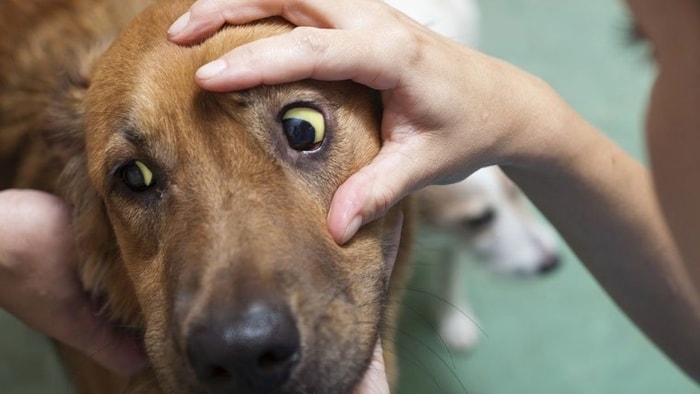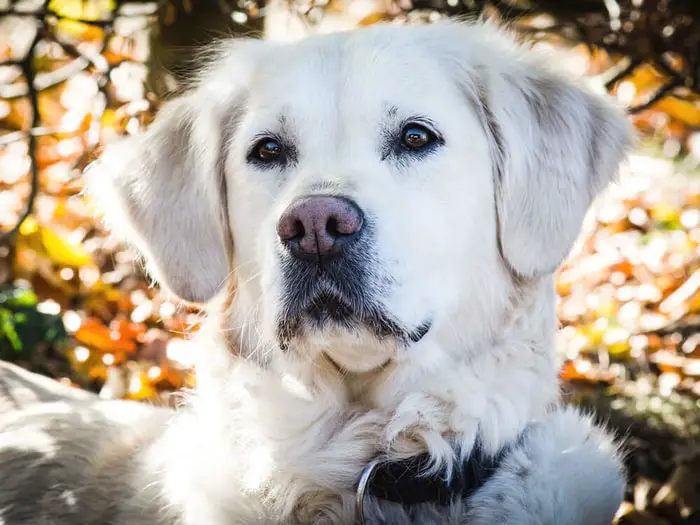Leptospirosis in dogs is a significant zoonotic disease of worldwide significance in man and many animals. Leptospirosis continues to be a problem in humans, but dogs are rarely incriminated nowadays. Most human leptospirosis is associated with contaminated water (rats) or cattle, and those most at risk are farmers and water sports enthusiasts. It is caused by infection with antigenically distinct serovars of the motile spirochetal bacteria Leptospira interrogans.
Risk Factors of Canine Leptospirosis
Leptospirosis is a common bacterial disease of dogs and other animals like cattle, swine, rats, skunks, and opossums. The condition is easily transmitted to humans by the urine and other contaminated foods, water, dropping, and contacts. As a dog owner, you frequently come in contact with your dog. If your dog is affected by this bacteria, then you are at high risk. Moreover, some dogs are asymptomatic carriers of the disease. They are more dangerous, as you cannot identify by yourself. So as a vet or pet owner, the basic knowledge of Leptospirosis in dogs is essential.

The Causal Agents of the Leptospirosis In Dogs
Several antigenically distinct serovars of L. interrogans are responsible for Leptospirosis in dogs. The serovars most commonly incriminated in canine infection and their conventional reservoirs include:
- Leptospira canicola (dogs)
- Leptospira bratislava (rodents, swine)
- Leptospira pomona (cattle, swine, skunks, opossum)
How Does a Dog Get Leptospirosis?
Domestic and wild animals are as severe as potential reservoirs of infection in humans and other animal hosts. Leptospirosis in dogs can be transmitted directly between hosts in close contact through urine, venereal routes, bites, or ingestion of infected tissues. Indirect transmission involves the exposure of susceptible animals to contaminated food, beddings, and soil. Contaminated water is the most common means of spread and habitats with stagnant warm water, and alkaline pH favors leptospira survival.

Shedding by infected animals is usually via the urine, and transmission is more frequent through contact with the urine of an infected animal. Still, it can be transmitted through bite wounds and the ingestion of contaminated material. People at most significant risk of getting the disease clean up after animals (farms, kennel owners, vets, wildlife rehabilitators, etc.) and those who swim, wade in, or drink contaminated waters. Since dogs always sniff the urine spots of other dogs (and wild animals), they are at higher risk than humans.
Clinical signs of Canine Leptospirosis
The signs depend on the host’s age and immune status, environmental parameters affecting the bacteria, and the disease-producing power of the infecting bacterial strain. Puppies are more severely affected than adults. Some infected dogs do not exhibit any signs of sickness, and some have a low and temporary illness and recover spontaneously, while others develop severe disease and death.

In dogs, signs of leptospirosis include pyrexia (103-104° F), shivering, muscle tenderness, anorexia, vomiting, diarrhea, dehydration, and increased thirst. Coagulation defects and vascular injury are characterized by hematemesis, hematochezia, melena, epistaxis, and widespread petechiae. Icterus is common in infected dogs. Reluctance to move and paraspinal hyperesthesia in dogs.
Mucous membranes appear injected, and petechial and ecchymotic hemorrhages are widespread of the disease. The disease can cause progressive deterioration in renal function is manifested by oliguria or anuria. Sometimes leptospirosis includes bleeding disorders that are characterized by petechial hemorrhage. Affected dogs may also be infected in uveitis, but it is an uncommon manifestation of the canine leptospirosis in dogs.
Diagnosis of canine leptospirosis
Diagnosis of leptospirosis in dogs is based on a combination of suggestive historical information, physical findings, non-specific laboratory findings, and confirmatory testing. The most commonly used serological test includes the Microscopic Agglutination Tests (MAT), which titrates the reactivity of antibodies in the dog’s serum with live leptospires. With the MAT, titers higher than 1:800 are considered possible for recent or active infection with leptospira. Side-effects of MAT include false-negative results early in the course of the disease. If you find a positive response is less, there is a more chance of chronic infection.

You can identify Leptospira organisms in fluids by Darkfield microscopic examination. This technique requires large numbers of plants in a very fresh sample to show a positive result. This test is good, but the problems are: the urine sample must be new. Most animal hospitals cannot do dark-field microscopy, and leptospira are only shed in urine intermittently.
Other serological tests, including the ELISA and FAT, could be used. PCR-identification of leptospiral DNA. A culture of urine or blood may do direct detection of bacteria. But organisms are difficult to isolate because of their precise growth requirements and susceptibility to ph and other environmental factors.
Management and Treatment of Leptospirosis in Dogs
Fluid therapy in shock should be treated with aggressive IV fluids, and dehydration should be corrected over 6 to 24 hours. Vomiting is frequently severe with leptospirosis and antiemetics, e.g., metoclopramide, chlorpromazine, ondansetron may be necessary. Penicillin, ampicillin, and doxycycline are very effective in eliminating the leptospirosis phase of the disease. Penicillins do not remove the carrier state of leptospirosis. Tetracyclines, fluoroquinolones, and erythromycin will reduce the carrier state of disease, but antibiotic treatment should be continued for at least four weeks.

Prevention and Control of Canine Leptospirosis
Your dog that has recovered from disease caused by one strain of leptospirosis will be protected from that strain in the future, but that protection does not cross-species. Therefore, your dog will remain susceptible to other forms of the disease. As the disease poses a risk of spread to other animals and humans, special precautions must be taken to prevent leptospira transmission from your dog. All blood, urine, and tissues from a dog infected with leptospirosis must be handled as biologically hazardous waste.

Prevention and control of leptospirosis may be based on avoiding exposure, isolating suspected cases, quarantine carriers, and vaccination. Your infected dogs should be quarantined, and areas of contamination you should be washed and disinfected with an iodine-based solution. Commercial vaccines are available, and the vaccines may only protect your dogs for 6 to 8 months, so vaccines should be recommended in high-risk areas twice-yearly.
Final Advice of Leptospirosis in Dogs
Leptospirosis is a common zoonotic disease that may easily transmit to humans and other animals. As a dog owner, vet, or caregiver, you must have a basic idea of the disease, especially the risk factors, transmission, clinical signs, and preventive measures. In my article, I have discussed all the essential information precisely for you. I think this information will help you. If you like the above information, please share it with your friends through social media.
